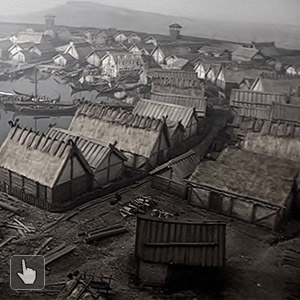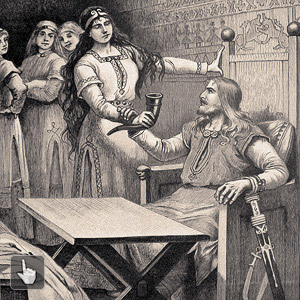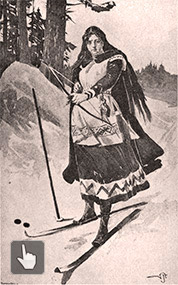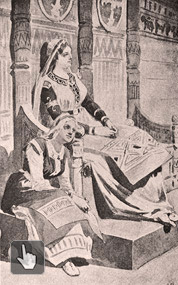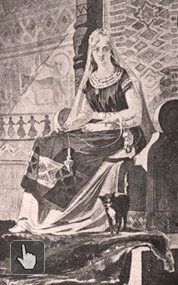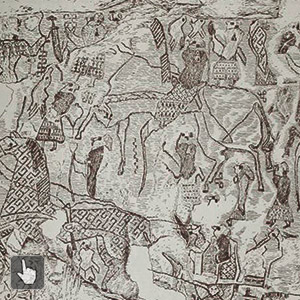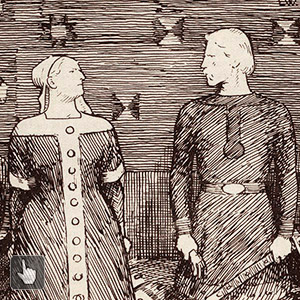|
|
|||||||||||||||||||||||


I finally got around to taking proper photos of this beautiful embroidered forecloth of mine. 🍃 
In my early #vikingsofinstagram days, I was sporting a similar elaborate brown and yellow Urnes-inspired embroidery hanging on the front of my first attempt at sewing an apron dress. I did (and still do!) find it glorious, and it sort of became my signature look in those days, making the rounds on sites like tumblr and pinterest. As I've mentioned before that also made it a headache for some people on sites dedicated to historical accuracy, even though I had never posted it to those types of fora (for good reasons, more about that further below). It was made to order from Dorota at Taberna Vagantis, and the stitching is so beautiful and neat that I could probably have worn it on the reverse without anyone thinking twice about it! A few years later I put together this slimmer Urnes-style design in dark and light greens based on patterns by Jonas Lau Markussen, and decided to splurge on a second custom order. Shortly after, the markets were cancelled for a long time, and it only got worn once before being put in a large wooden chest where it has been hiding ever since. I think it's about time it saw daylight again. ^^ 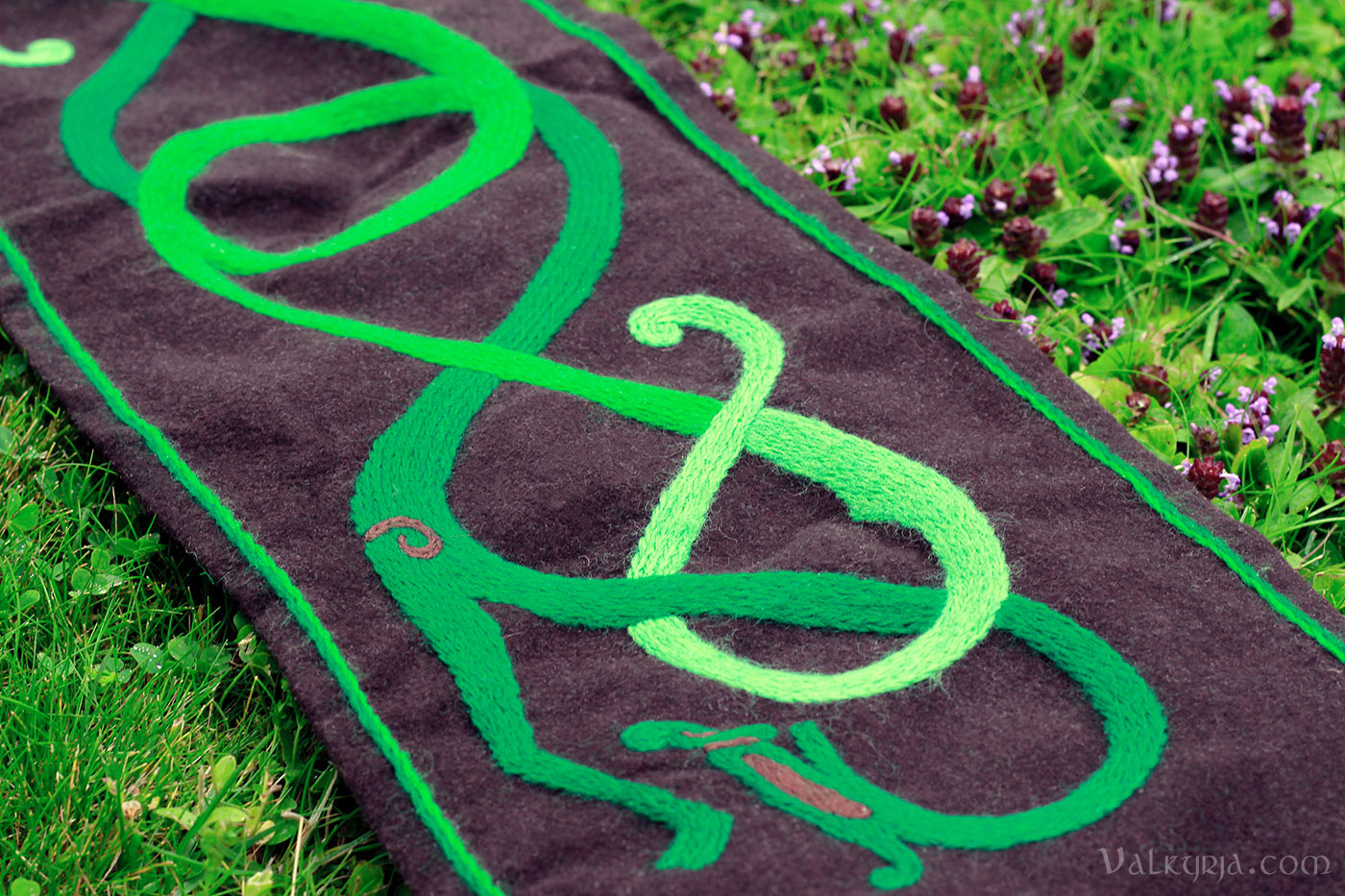

But...is there any reason to think that Viking women may have worn forecloths like this over their apron dress? As always when it comes to archaeological evidence for clothing from the Viking Age, we are left with little certain information. Findings mainly consist of small fragments that can sometimes provide information about material, type of weave and thread count, perhaps even with remains of dye and decorative stitching, but usually they tell little about the garment as a whole. Placement of the fragments often needs to be interpreted based on other items such as jewellery. Loops from apron dresses are often found preserved by the metal of the oval brooches that would be used to connect them to the front of the dress, and several such findings show numerous loops in the lower part of the brooches. Those could be from bands used to carry tools such as scissors on knifes; loops from several apron dresses worn on top of each other; or possibly from a garment worn at the front of the dress such as an additional apron. So yes, forecloths like this are one possible interpretation of archaeological findings. Decorative embroidery on clothing—at least to the extent of my embroidered forecloth—are however much more speculative. There are findings of rich embroidery on clothing from the Viking (of which the extravagant Mammen grave find in Denmark is the chief example) but these are few and far between. Despite traditions for making detailed embellishments on anything from jewellery to everyday items of wood and leather, using decorative paint, and making finely woven and dyed textiles; the traditions for embroidering developed late in Scandinavia and the exceptions found are usually attributed to other cultures (in terms of influence or imports from for example Anglo-Saxon England, Ukraine, Russia, or the Byzantine empire). These are the reasons why I usually won't wear embroidered clothing to Viking Age events that focus on authenticity, though I will whip out my fancy-dress when I feel like really dressing up! 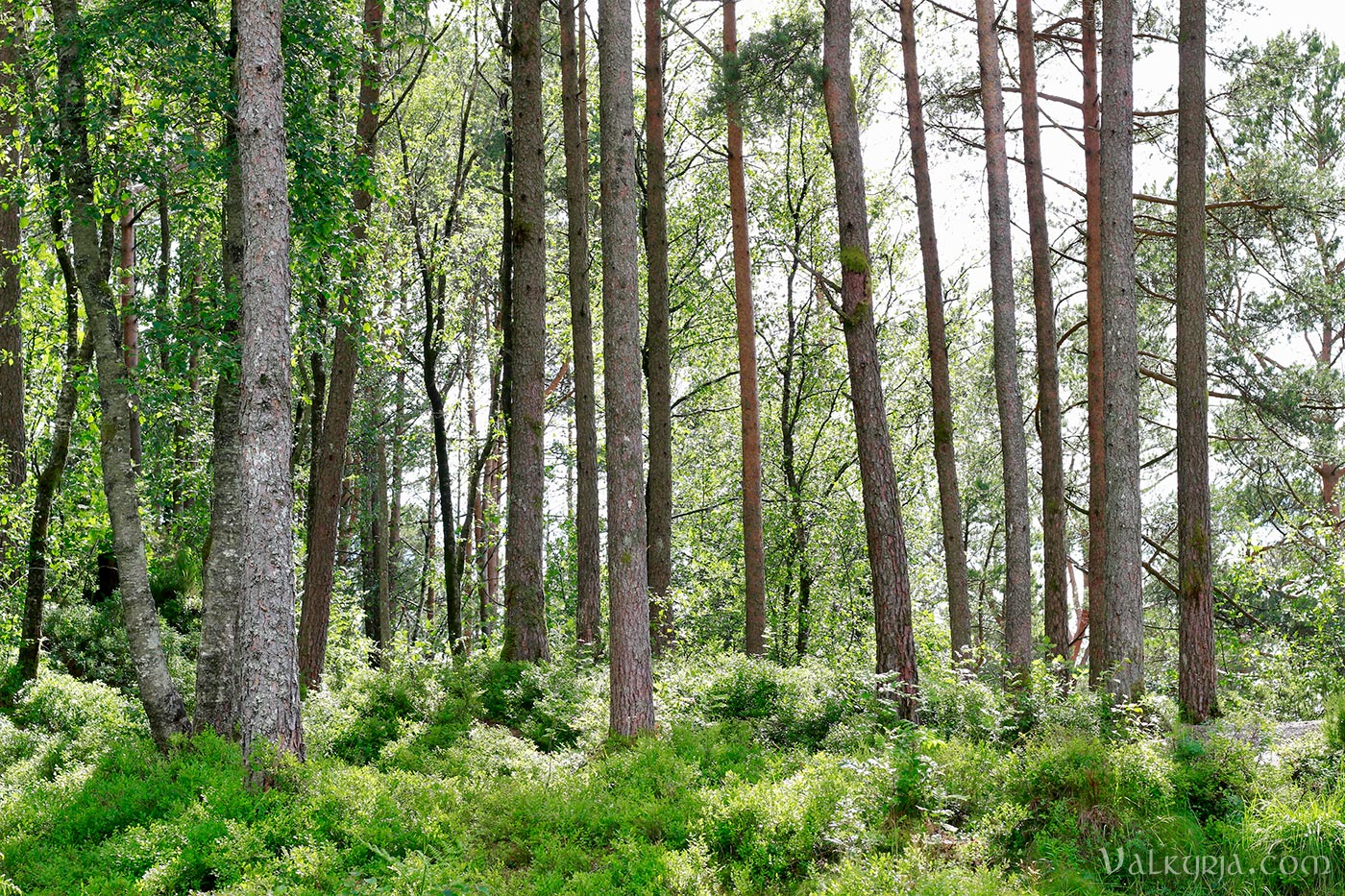

What is your opinion: Do you mind any sort of fantastical elements among Viking reenactors or do you have any guilty pleasures in your chest as well? Music: Emian - La Giga del Lupo Introductory text: Excerpt from Völuspá, stanza 4 # Comments
Oh my! I am floating in a bubble of happiness and love: What a lovely weekend this has been 🌿⛺️❤️ 
Bjørgvin Viking & Medieval Market is just a few minute's drive from our house, the first historical market I ever went to (11 years ago now), and it has had such a special place in my heart ever since. The cancellations during the pandemic (or the plague, as we say) hit us all hard, and the market hadn't gotten back on the feet since. These things take a lot of organizing and volunteers, and it was about to get cancelled again when it was decided to make a low-key version of the event this year — a camp with just a few Vikings meeting up rather than doing the whole shebang with marketing, entrance fees, café, or having a program with planned activities and shows. But when the weekend came, over a hundred reenactors had signed up, and the area was filled with historical tents and old friends, music and laughter. The location, the outdoor Hordamuseum, was literally bursting with green as it always is this time of year, and the sun joined us for the whole weekend. 🍃🌞 I've been bugged with tendinitis in both wrists lately, but it turns out that's no match for my stubbornness...so both my boys had matching handsewn tunics, and I made a new apron dress for myself for the event as well. My little Einar looked overwhelmingly cute in his outfit, and he was busy running around as fast as he could to explore everything.. I swear that boy hasn't stopped running since he learned how to use his feet! :D I loved seeing how much fun he had, and how comfortable he is in this scene, which will no doubt be a big part of his summers in the years to come. ♥ I managed to make some snapshots in between. ^^ Please feel free to enjoy the music embedded at the top of this post while having a look! 





Bettina and Iselin (who was one of the organizers of the event—thank you again!) 

Mandatory photo of our pretty tentpoles 🐉 



Anja and Claus! 


Silje & Dan Jarle! 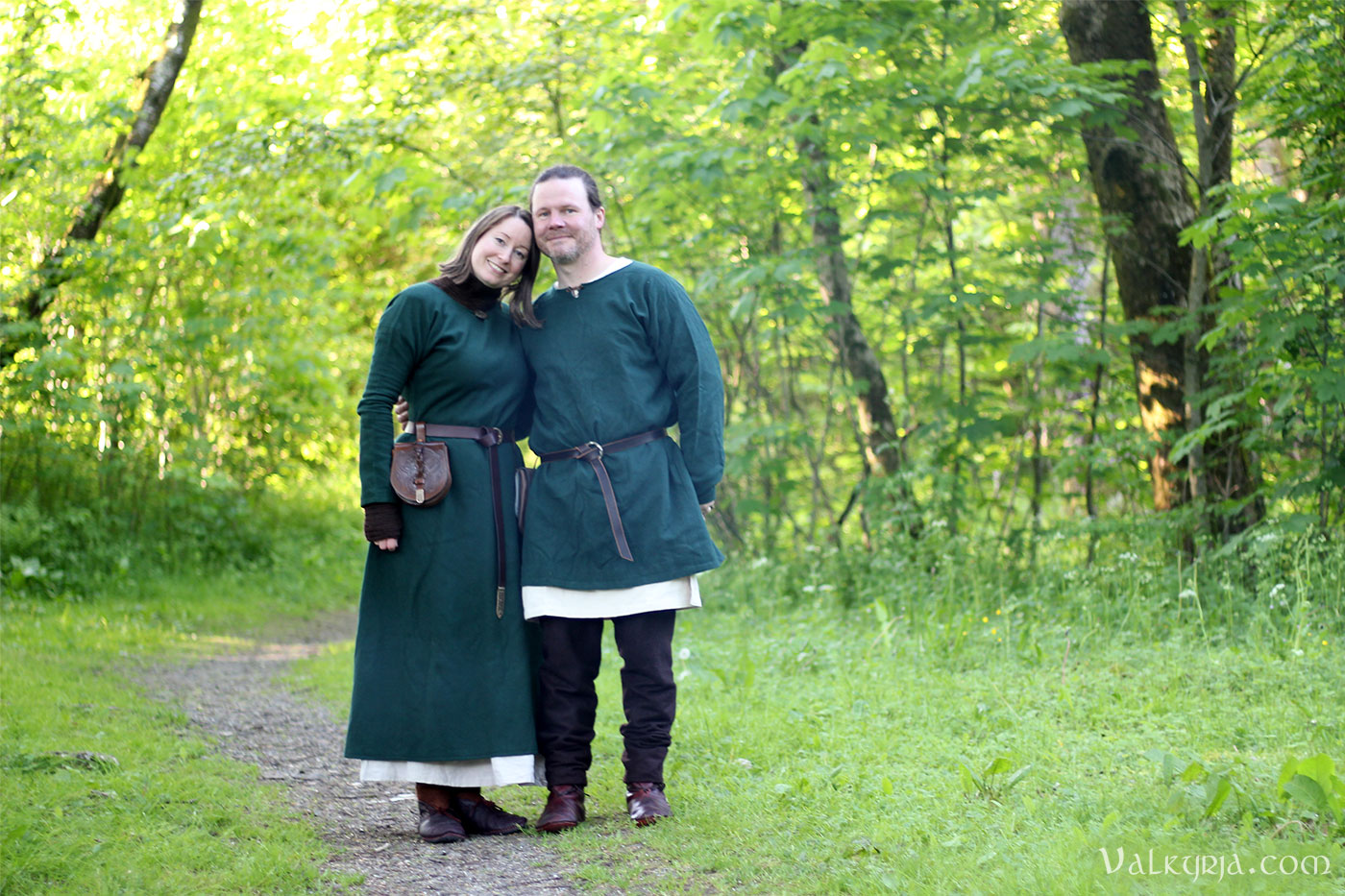

Another day, another breakfast! 

Benedicte and Lars Christian ^^ 
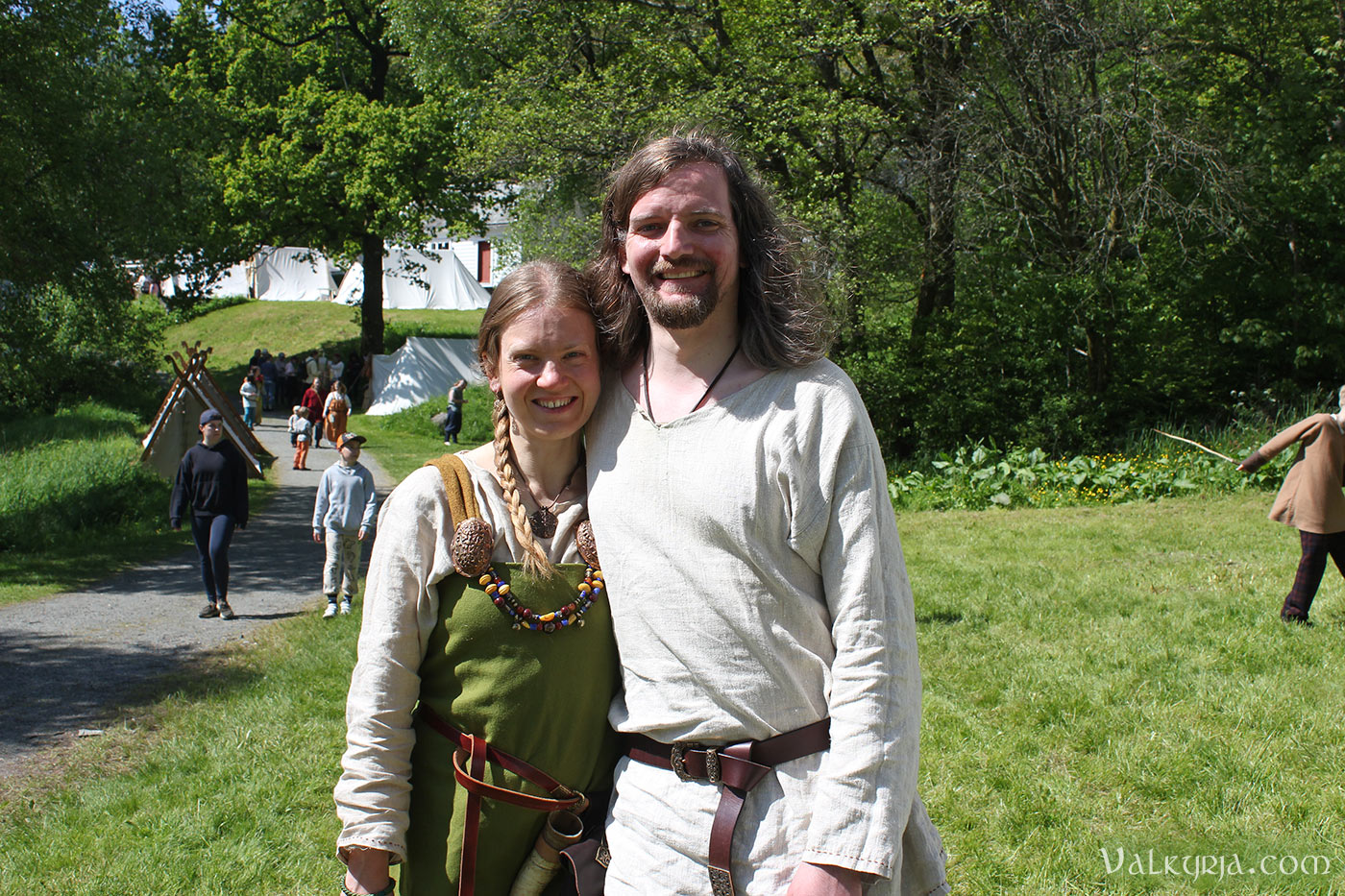





Now we are home, done unpacking, and fresh out of the shower. Einar is fast asleep, and I am ready for some sleep myself... But I will cherish this weekend forever 🥰 Music: The Tossers - The Humors Of Glendart # Comments
Myths about Norse cultural history are widespread, often demonstrated by sensational tall-tales from newspaper reports, being quoted and pasted on dubious photos and illustrations shared by the thousands on social media. Be it that "half of the Viking warriors were female" or "why the Vikings were even more savage than you thought", people's concepts of this culture tend to represent either extreme of the scale, with emancipated female warriors strutting around in boob-armor or by chauvinistic mushroom-chewing berserkers trying to rape everything around them. But populist portrayals aside; even when trying to stick to historical sources, we are still likely to run into misinterpretations of archeological evidence, not to mention the fact that historians are basing a lot of their knowledge on medieval literature written by highly biased authors. Sadly, critical examination of sources is often absent in the modern interpretations receiving the most attention by the public. I thought I'd try to write about women in the Viking Age and their role in the society of the time, a good example of a topic that is easily tainted by newer perspectives, possibly leading to prejudice and misattribution of old as well as newer findings. Who were the women of the Viking age? 
Firstly, allow me to emphasize that what we call Vikings in terms of conducting overseas raids (excluding overseas trading and colonization), which the modern cliché is based on, may have concerned roughly a half percent of the population (1). But when speaking of the Viking age we are speaking of the whole population, which is an essential difference. Ask yourself; would you feel comfortable being characterized by descriptions of the most extreme individuals of our time? 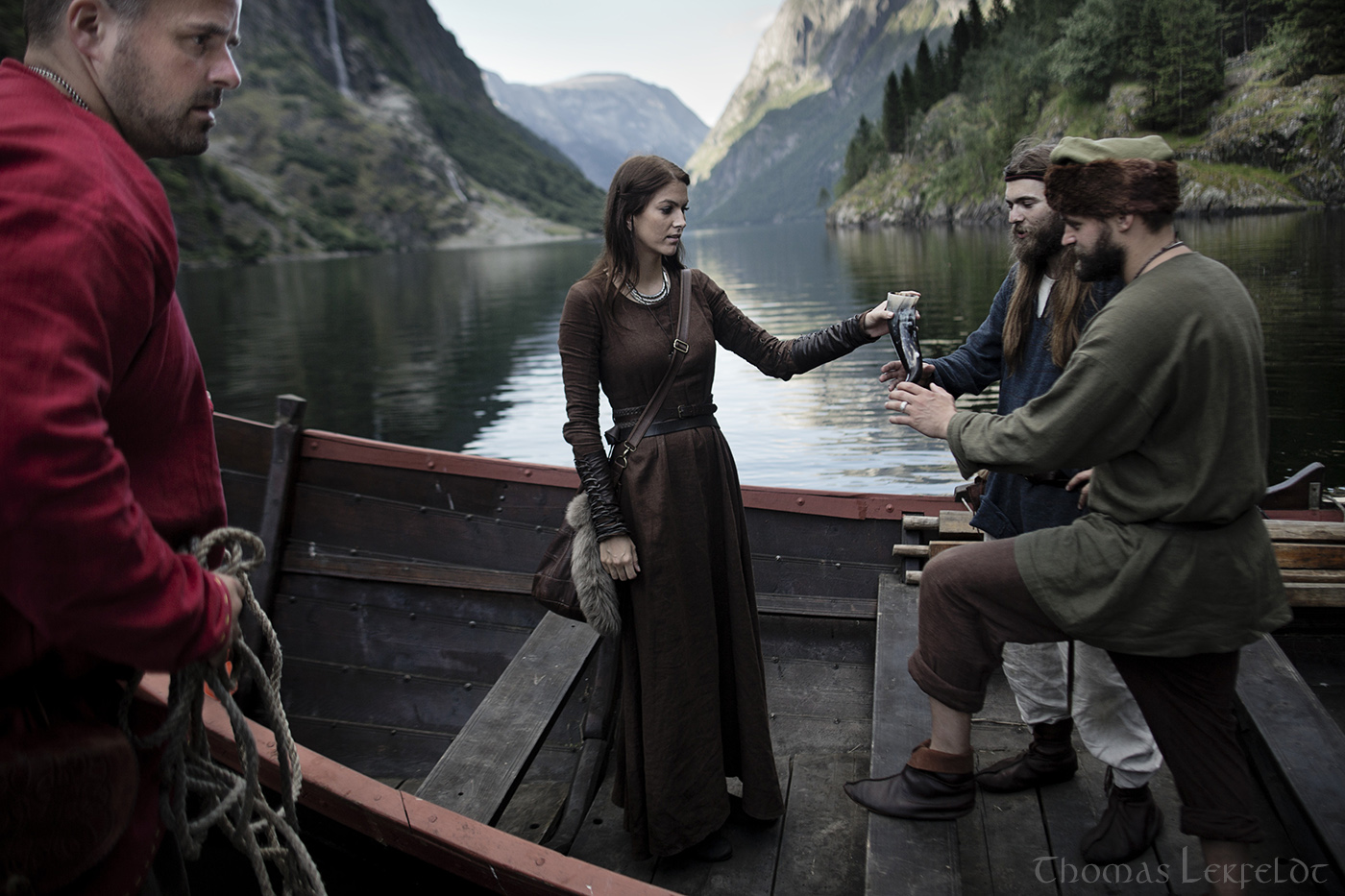
It is common to assume that Viking society was unilaterally male-dominated and that women by definition were suppressed, as humble housewives, browbeaten baby machines or worse. Another common belief is that only the men went Viking so to speak, solely to wage war, plunder and destroy. But research points in the direction of a more egalitarian society, where women enjoyed respect in the community and participated in the emigration alongside their men. As archeologist Marianne Moen suggests in her master's thesis, assuming that men were rated above women in the Viking society is to ascribe modern values to the past, which will be misleading (2, 3). When it comes to religious ideals, the gender culture of Norse mythology was not characterized by Christian women's submission (4), or Islamic women's obedience (5). The historical literature involves clear and repeated accounts of female figures in a broad range of roles; as housewives, priestesses, valkyries, warriors, seeresses and goddesses. It further contains descriptions of heroines, female strategists, travelers and settlers, and there is no reason to ignore these accounts (or to explain them based on these women's association with powerful men), while at the same time accepting descriptions of the male Viking from the same sources. Let me list some further examples of female independence from Norse mythology: In Lokasenna (10), we can read about Freya's father Njörðr, who tells Loki that he should not mind whom a woman chooses to enjoy herself with, or criticize her for it. In Skáldskaparmál (11) we hear of Skaði, who showed up in Ásgarðr wearing a helmet, coat of mail and full armour, to avenge her father. She was granted settlement and compensation, and to choose one of the men in Ásgarðr to be her mate. In Gylfaginning (9) we hear of her following marriage to Njörðr. Njörðr wished to live by the sea, while Skaði wanted to live in the mountains where she could ski and bow hunt. The couple agreed to spend nine nights at a time in each of their dwellings. Eventually Skaði grew tired of the noise of the waves and cries of the seagulls, and moved to the mountains by herself. 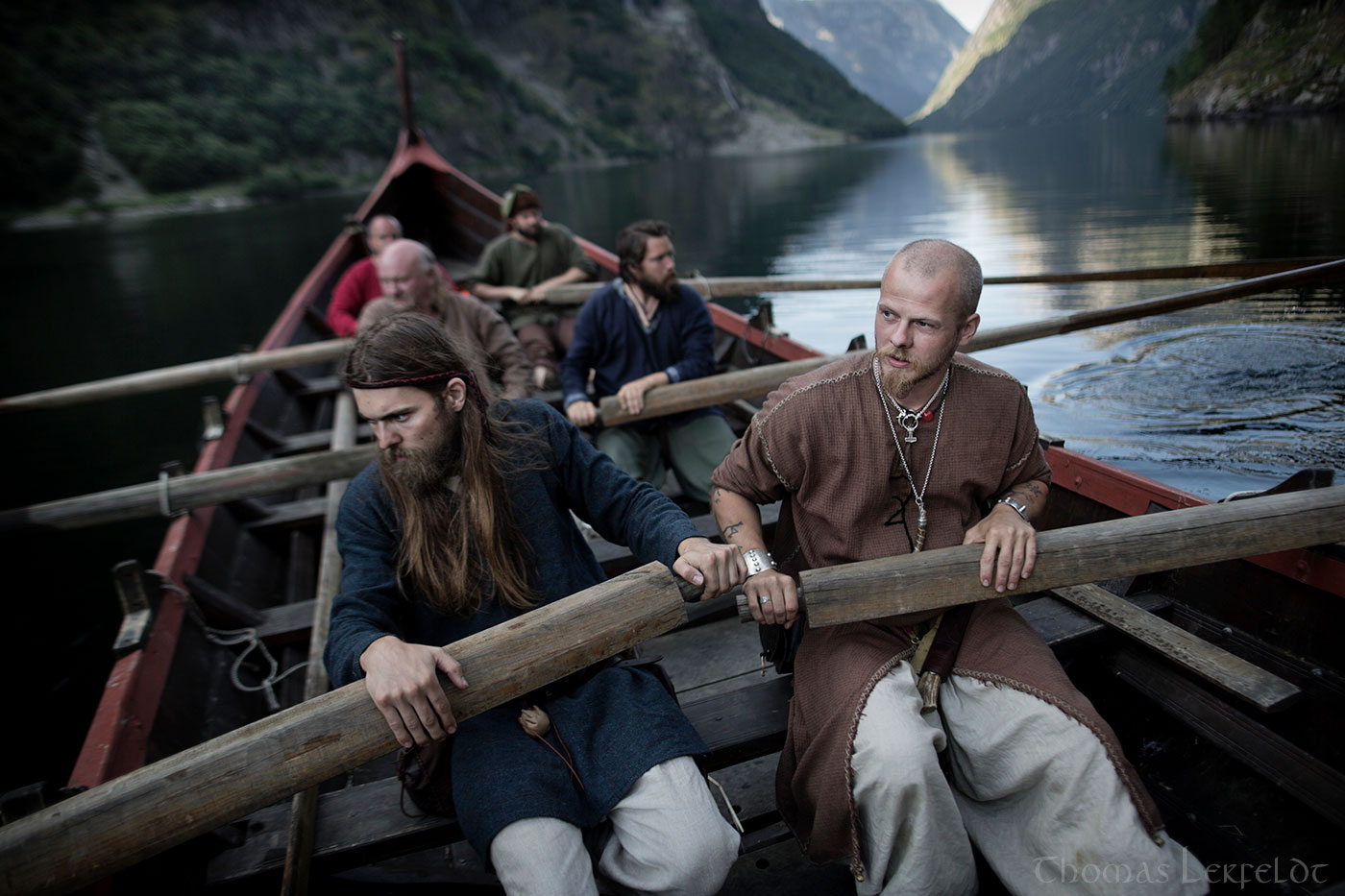
When it comes to warfare, strength and other classically masculine or powerful qualities, they were not especially reserved for men—contrary to depiction given by common modern descriptions of Ásatrú. Let me mention Eir (medicine), Hel (death), Frigg (all-knowing), Hlín (protection), Rán (the sea) Snotra (wisdom), Syn (rejection), Þrúðr (strength), not to mention the norns of fate; Urðr, Verðandi and Skuld (past, present and future). 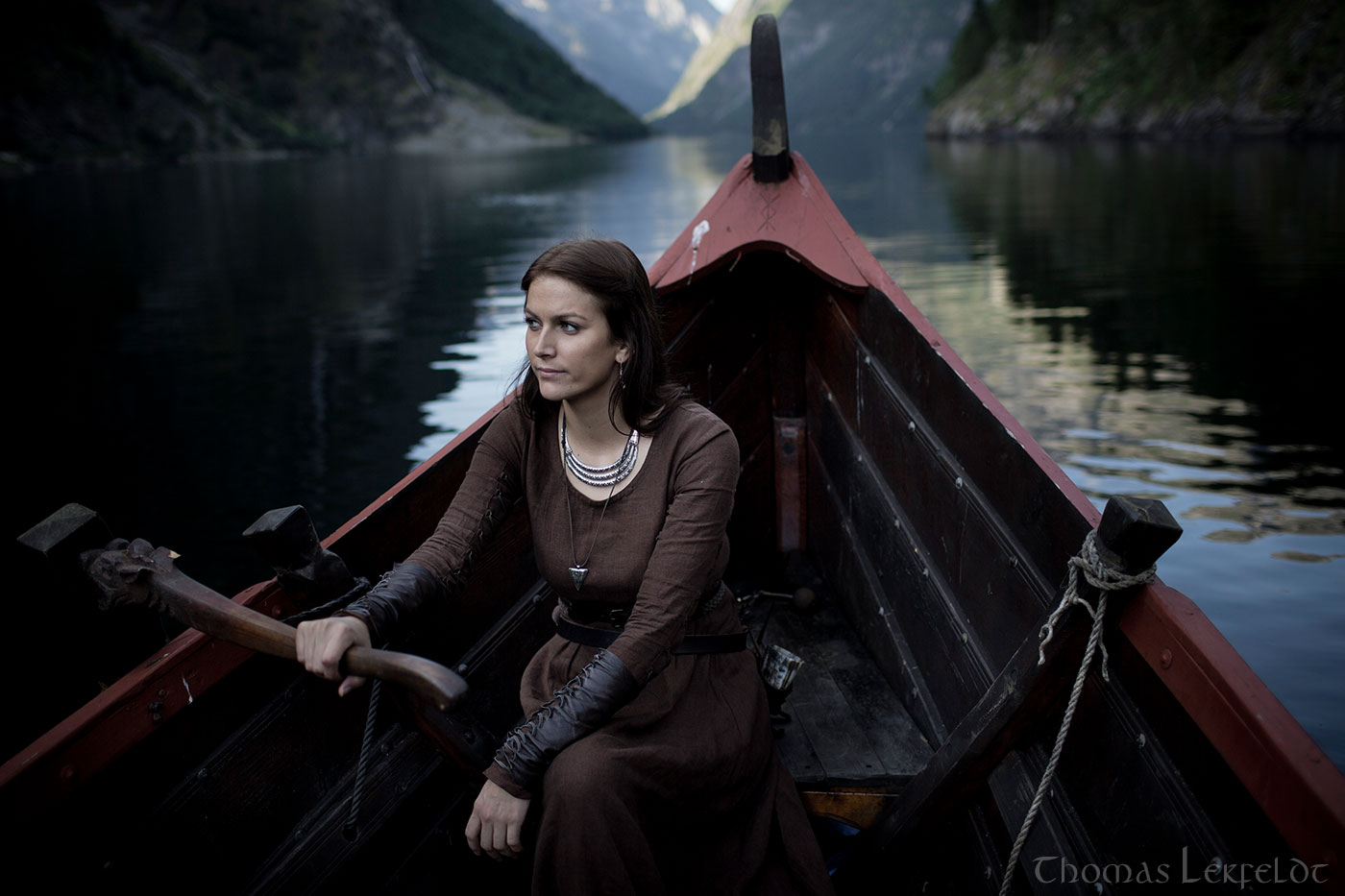
The Valkyries are warrior goddesses, who can ride through the air, and decide the outcome of the war. There are numerous Valkyries mentioned by name, and among them are Hildr who can wake fallen warriors back to life, and Skjeggöld meaning time for the axe. Other examples are Göndul and Skögul, who are described in Hákonarmál (13), when Hákon and his men are dying in battle. They see Göndul, standing there leaning on a spearshaft, surrounded by helmet wearing women sitting tall on their horses. The Valkyries chose who would live or die in battle, and brought them to Ásgarðr. Of all the warriors, Freyja chose half to bring to her domain Folkvangr, while the rest went to Óðinn in Valhöll (Valhalla) (9). Long before the Viking Age, there was the 9000 year old skeleton from Bäckaskog (17), who was buried with a spear and chisel, called the oldest hunter in Scandinavia, and assumed to be a man. Later investigations showed that the hunter had given birth to 10-12 children. Examples of archeological findings where women have been misidentified as men based on the items located in the grave, such as swords and armor, are also seen among Viking Age grave findings. Later studies of skeletal remains at Repton Woods in East-England have revealed that nearly half of the remains were female (18). Although the implications of that particular finding have been exaggerated out of proportion by popular media (who are unlikely to have accessed the original report at all), it does give reason to believe that other graves where it has not been possible to determine gender, but where the assessment has been based on such objects, may be subject to possible bias and gender prejudice. Research shows that women took large part in the emigration to England, even in the earliest periods (18). Whether they came as warriors, tradeswomen or family members, the collective evidence of the literature, mythology, archeology and legislation of the time does cast doubt about the assumption of the Viking age as a tendentious era consisting of dominant machomen, with females as passive housewives and shadows in the background. One can assume that gender roles in the Viking Age were most certainly practically distributed considering childbearing, mobility, physical abilities and age—but there is no indication that these limits were rigid and without room for individual variation, or that one gender was deemed more honorable than the other. The understanding of the Vikings as primarily being farmers and traders often comes short when competing with dramatic stories or television adaptions of bloodthirsty warriors and raiders. We know that the Vikings were responsible for pillaging (just like Franks, Anglo-Saxons and Arabians also were) but it is important to remember that these events were documented by Christian scholars and literate men of the time, who surely had religious and political reasons to avoid understatements. As Torgrim Titlestad (19) puts it: The Vikings appearance in Europe was described by terrified and propagandizing Christian monks, who often concealed abuse and cruelties undertaken by their own rulers. When it comes to the stories of sexual violence which are so often referred to, these are not rooted in the written sources, as opposed to accounts of that carried out by other groups of the same time (20). 
Now, you can of course accuse me of being naïve and uncritical, and say that this blog post is my interpretation based on wishful thinking of the horrible things committed by the Vikings not taking place. But I firmly believe that if you—completely devoid of contemporary gender roles—look at what we can actually claim to know based on tangible and evidence-based research findings, the Viking age was probably a much less stereotypical and male-chauvinistic society than what is the general perception of this people today.
Photography: Thomas Lekfeldt and Silje Samdal # Comments |
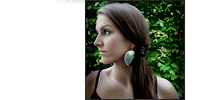 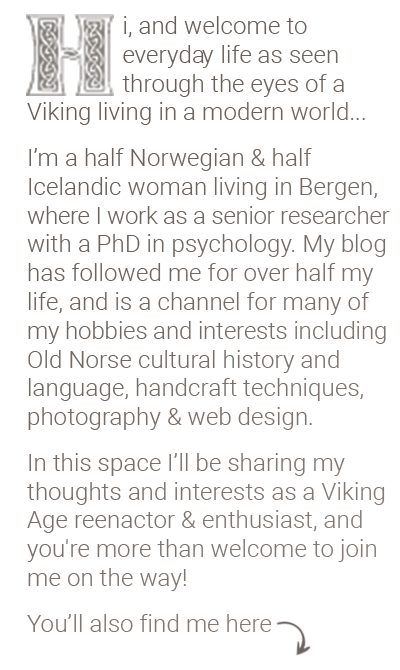
|
||||||||||||||||||||||
|
|||||||||||||||||||||||
